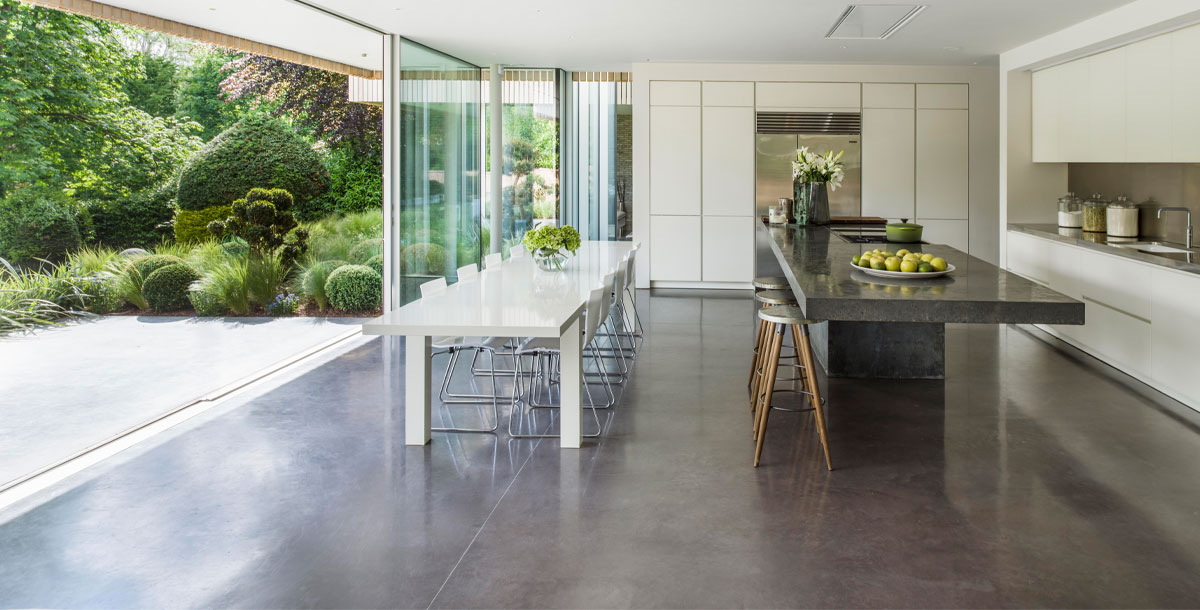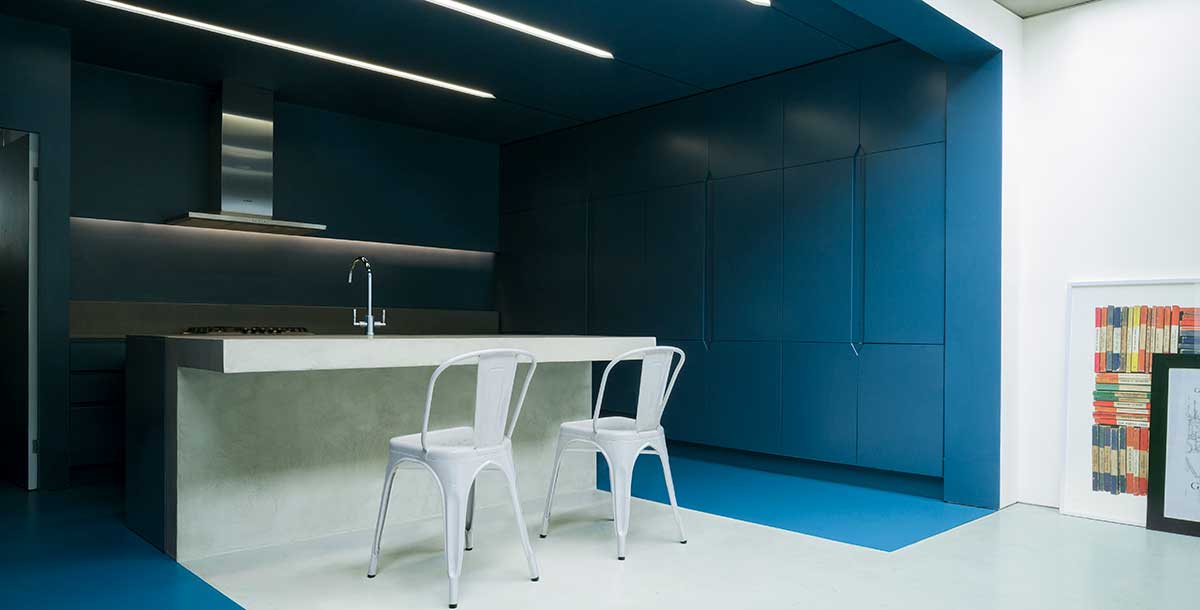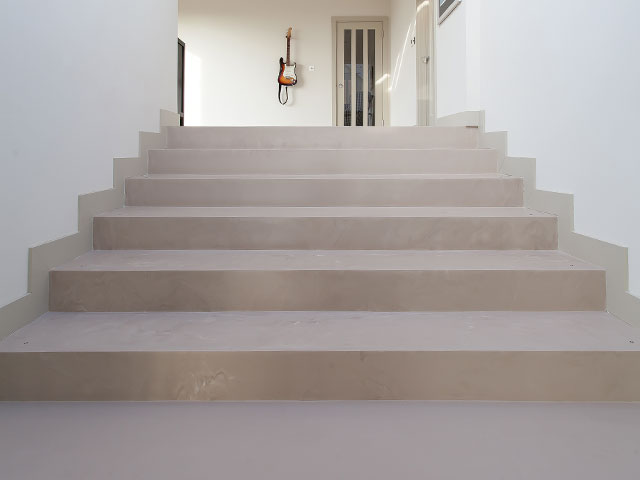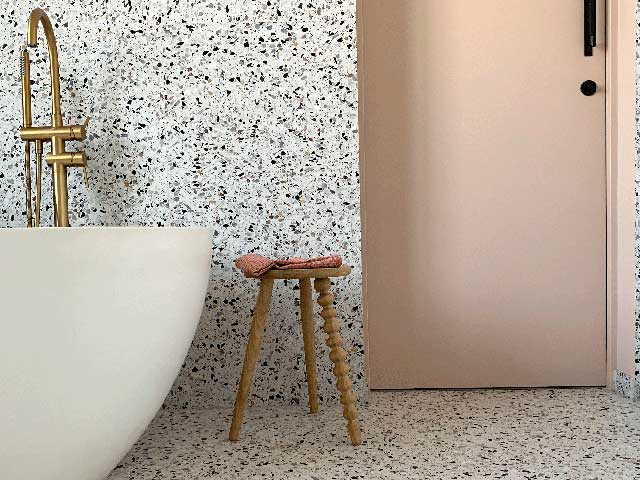Solid floors: concrete, resin and terrazzo guide
Uncovering the pros and cons of these contemporary flooring styles
Once regarded as only suitable for utilitarian spaces such as garages, workshops or cellars, solid floors are now used in all areas of the home. Long valued for their durability, modern concrete, terrazzo and resin flooring comes in a versatile range of hues and gives a seamless finish that can be highly polished or more matt. This flooring guide demonstrates the options available so you can decide which will work best in your space.
Concrete floors
A concrete floor is poured in a single 100mm-thick layer that takes 28 days to cure before it is sealed and polished. The mixture is pumped in through a long, flexible tube, and the cement mixer needs to be close to the house to enable this to happen. There are several colours available, including off-white, grey and black, which can be given a matt, satin or gloss finish.
There is a possibility that the floor will crack due to shrinkage as the concrete cures. To lessen the chances of this happening, shrink-reducing additives can be included in the mix, and anti-crack reinforcements added during installation. Concrete can be used on upper floors providing the subfloor is properly prepared and designed to take the weight.
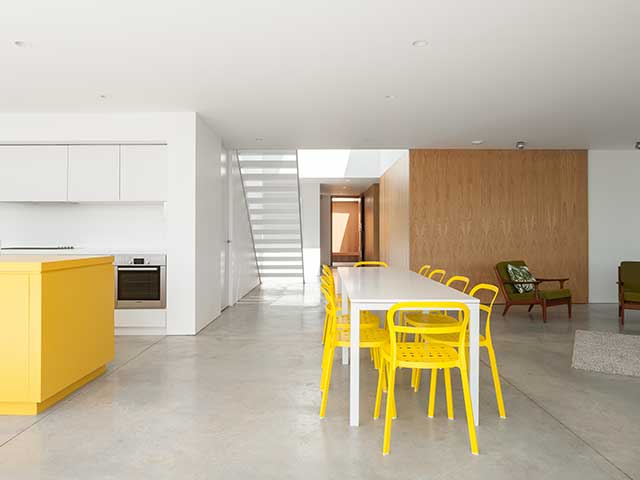
In this open-plan space Soup Architects colour-matched the concrete floor to the exterior brickwork. Photo: Andy Matthews
Micro-cement
Alternatively, micro-cement is a more lightweight option. Concrete is poured after the underfloor heating is installed. During a renovation project, the doors and skirting boards will be removed prior to the floor going down. The degree of disruption and mess may rule out the material as an option for smaller refurbishment projects.
‘Poured concrete is a more straightforward process for a self-build, whereas micro-cement may be a better choice for a renovation,’ says Ben Young of decorative concrete specialist Lazenby.
Concrete is extremely durable and has a high thermal mass. It can absorb and retain the warmth of sunlight and other heat sources, helping to make spaces warm in winter and cool in summer. But the manufacturing process produces high levels of carbon emissions and uses lots of water. To reduce the environmental impact, choose a company with a UK plant that uses recycled and waste byproducts to make its concrete such as Cemex.
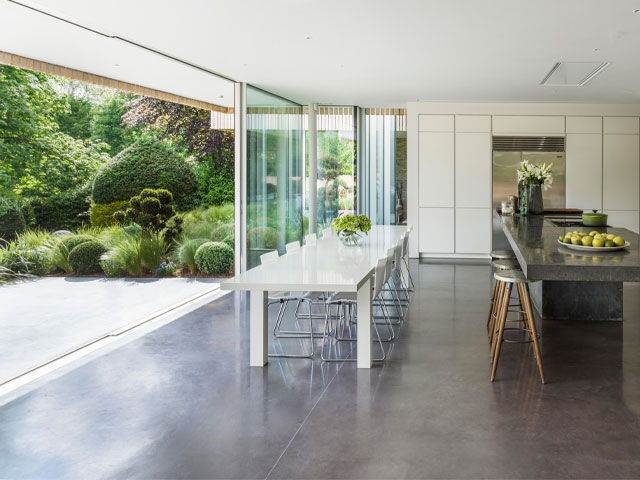
This polished concrete floor by Lazenby flows from indoors to out
Lightweight and tough
Micro-cement, also known as micro-concrete, is cement-based. It looks like poured concrete, but is hand-applied in layers using a trowel to a depth of just 3mm. It dries in 24 hours and can be sealed the day after installation. As micro-cement is thinly applied, the quality of the subfloor is very important. If it is compromised in any way, there will be imperfections in the surface.
Despite its shallow depth, the floor is durable and lasts for 10 to 15 years if well maintained. It’s also water-resistant, seamless, and can be laid over any solid subfloor including ceramic tiles. It is a good alternative to poured concrete for renovation projects or loft conversions where the weight of the floor and/or the access is a limiting factor. Eco-friendly formulas such as Carrcrete’s MicroFloor include recycled glass as an aggregate and a low-CO2 cement binder.
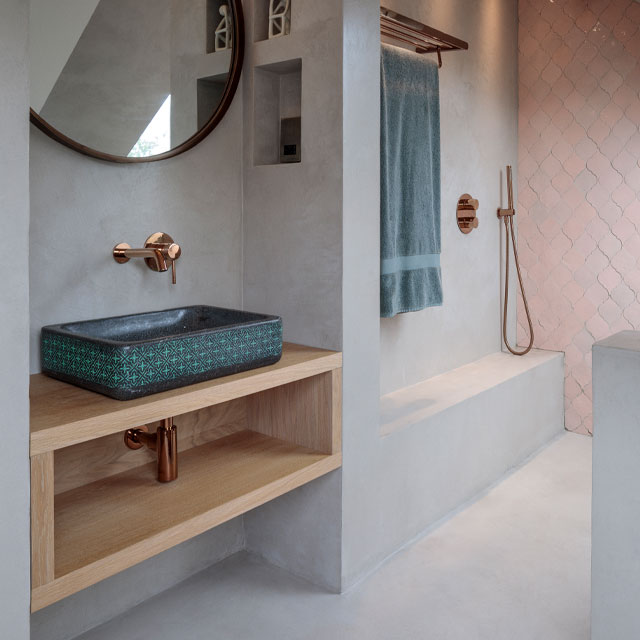
KM I Design studio clad the floor and walls of this bathroom in micro-cement. Photo: Dirk Lindner
Cosy and colourful
Resin flooring feels soft and warm underfoot. It has a degree of flexibility and is resistant to cracking, so it can even be applied to timber floorboards or across different subfloors. It is hand-applied in several layers to a total depth of 3-4mm. Each layer must cure before the next is added, so installation takes five to seven days. Resin must be applied and sealed by a professional, after which it should last around 25 years when cared for properly.
It comes in a wide range of colours. Choose from the RAL and Natural Colour System (NCS) charts, plus shades that mimic concrete. Some resins use castor oil as a core ingredient, and these are free of volatile organic compounds (VOCs), don’t off-gas and are UV-resistant, so they don’t go yellow when exposed to daylight.

